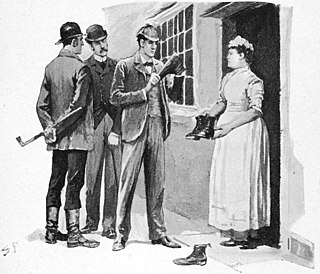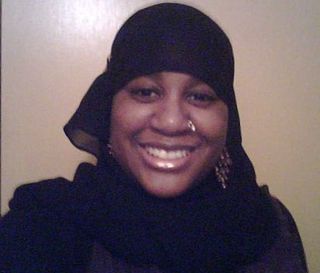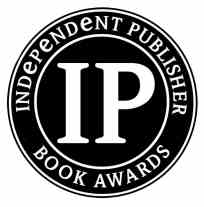
Detective fiction is a subgenre of crime fiction and mystery fiction in which an investigator or a detective—whether professional, amateur or retired—investigates a crime, often murder. The detective genre began around the same time as speculative fiction and other genre fiction in the mid-nineteenth century and has remained extremely popular, particularly in novels. Some of the most famous heroes of detective fiction include C. Auguste Dupin, Sherlock Holmes, Kogoro Akechi, Miss Marple and Hercule Poirot. Juvenile stories featuring The Hardy Boys, Nancy Drew, and The Boxcar Children have also remained in print for several decades.

Children's literature or juvenile literature includes stories, books, magazines, and poems that are created for children. Modern children's literature is classified in two different ways: genre or the intended age of the reader, from picture books for the very young to young adult fiction.

New Zealand literature is literature, both oral and written, produced by the people of New Zealand. It often deals with New Zealand themes, people or places, is written predominantly in New Zealand English, and features Māori culture and the use of the Māori language. Before the arrival and settlement of Europeans in New Zealand in the 19th century, Māori culture had a strong oral tradition. Early European settlers wrote about their experiences travelling and exploring New Zealand. The concept of a "New Zealand literature", as distinct from English literature, did not originate until the 20th century, when authors began exploring themes of landscape, isolation, and the emerging New Zealand national identity. Māori writers became more prominent in the latter half of the 20th century, and Māori language and culture have become an increasingly important part of New Zealand literature.

Mystery is a fiction genre where the nature of an event, usually a murder or other crime, remains mysterious until the end of the story. Often within a closed circle of suspects, each suspect is usually provided with a credible motive and a reasonable opportunity for committing the crime. The central character is often a detective, who eventually solves the mystery by logical deduction from facts presented to the reader. Some mystery books are non-fiction. Mystery fiction can be detective stories in which the emphasis is on the puzzle or suspense element and its logical solution such as a whodunit. Mystery fiction can be contrasted with hardboiled detective stories, which focus on action and gritty realism.
A literary genre is a category of literature. Genres may be determined by literary technique, tone, content, or length. They generally move from more abstract, encompassing classes, which are then further sub-divided into more concrete distinctions. The distinctions between genres and categories are flexible and loosely defined, and even the rules designating genres change over time and are fairly unstable.
Arabic literature is the writing, both as prose and poetry, produced by writers in the Arabic language. The Arabic word used for literature is Adab, which comes from a meaning of etiquette, and which implies politeness, culture and enrichment.
Mormon fiction is generally fiction by or about members of the Church of Jesus Christ of Latter-day Saints, who are also referred to as Latter-day Saints or Mormons. Its history is commonly divided into four sections as first organized by Eugene England: foundations, home literature, the "lost" generation, and faithful realism. During the first fifty years of the church's existence, 1830–1880, fiction was not popular, though Parley P. Pratt wrote a fictional Dialogue between Joseph Smith and the Devil. With the emergence of the novel and short stories as popular reading material, Orson F. Whitney called on fellow members to write inspirational stories. During this "home literature" movement, church-published magazines published many didactic stories and Nephi Anderson wrote the novel Added Upon. The generation of writers after the home literature movement produced fiction that was recognized nationally but was seen as rebelling against home literature's outward moralization. Vardis Fisher's Children of God and Maurine Whipple's The Giant Joshua were prominent novels from this time period. In the 1970s and 1980s, authors started writing realistic fiction as faithful members of the LDS Church. Acclaimed examples include Levi S. Peterson's The Backslider and Linda Sillitoe's Sideways to the Sun. Home literature experienced a resurgence in popularity in the 1980s and 1990s when church-owned Deseret Book started to publish more fiction, including Gerald Lund's historical fiction series The Work and the Glory and Jack Weyland's novels.
Young adult literature (YA) is typically written for readers aged 12 to 18 and includes most of the themes found in adult fiction, such as friendship, substance abuse, alcoholism, and sexuality. It is characterized by simpler world building than adult literature as it seeks to highlight the experiences of adolescents in a variety of ways. There are various genres within young adult literature.
Islamic literature is literature written by Muslim people, influenced by an Islamic cultural perspective, or literature that portrays Islam. It can be written in any language and portray any country or region. It includes many literary forms including adabs, a non-fiction form of Islamic advice literature, and various fictional literary genres.

Lesbian literature is a subgenre of literature addressing lesbian themes. It includes poetry, plays, fiction addressing lesbian characters, and non-fiction about lesbian-interest topics. A similar term is sapphic literature, encompassing works that feature love between women that are not necessarily lesbian.

Syrian literature is modern fiction written or orally performed in Arabic by writers from Syria since the independence of the Syrian Arab Republic in 1946. It is part of the historically and geographically wider Arabic literature. Literary works by Syrian authors in the historical region of Syria since the Umayyad era are considered general Arabic literature. In its historical development since the beginnings of compilations of the Quran in the 7th century and later written records, the Arabic language has been considered a geographically comprehensive, standardized written language due to the religious or literary works written in classical Arabic. This sometimes differs considerably from the individual regionally spoken variants, such as Syrian, Egyptian or Moroccan spoken forms of Arabic.

William Roorbach is an American novelist, short story and nature writer, memoirist, journalist, blogger and critic. He has authored fiction and nonfiction works including Big Bend, which won the Flannery O'Connor Award for Short Fiction and the O. Henry Prize. Roorbach's memoir in nature, Temple Stream, won the Maine Literary Award for Nonfiction, 2005. His novel, Life Among Giants, won the 2013 Maine Literary Award for Fiction.[18] And The Remedy for Love, also a novel, was one of six finalists for the 2014 Kirkus Fiction Prize. His book, The Girl of the Lake, is a short story collection published in June 2017. His most recent novel is Lucky Turtle, published in 2022.
Linda "Jamilah" Kolocotronis was an American Muslim writer and former educator in American Islamic schools. Of Greek origin, she converted to Islam at the age of 23, and she published several Islamic fiction novels as well as her doctoral dissertation. Kolocotronis changed her first name to Jamilah when she became Muslim in 1980.

Maryam “Umm Juwayriyah” Sullivan is an American poet, novelist, playwright, journalist and performance artist. Sullivan's novel The Size of a Mustard Seed is the first published Islamic Urban fiction title.

The Independent Publisher Book Awards, also styled as the IPPY Awards, are a set of annual literary awards for independently published books. They are the longest-running unaffiliated contest open exclusively to independent presses. The IPPY Awards are open to authors and publishers worldwide who produce books written in English and intended for the North American market. According to the IPPY website, the awards 'reward those who exhibit the courage, innovation, and creativity to bring about change in the world of publishing.'
Visionary fiction is a fiction genre with New Age or mind, body, spirit themes and perspectives, including consciousness expansion, spirituality, mysticism, and parapsychology. It is sometimes classed as a subtype of speculative fiction. Examples include the novels The Celestine ProphecyThe Alchemist, and Illusions: The Adventures of a Reluctant Messiah. The Book Industry Study Group's BISAC subject heading FIC039000 is "FICTION / Visionary & Metaphysical".
Arup Kumar Datta is an Indian writer and Journalist from Guwahati, Assam. He has written 18 books for adults and 17 adventure novels for young people. In 2014 he was awarded the Life Time Achievement Honour by Association of Writers and illustrators for Children, New Delhi, the Indian chapter of the International Board of Books for Young People. He has also won numerous awards including the Shankar's Award in 1979, conferred to mark The International Year of the Child. He has been awarded the civilian award Padma Shri by Government of India in 2018.
Wael Abdelgawad is an American-born novelist, web developer and martial artist, best known for founding one of the first online Muslim matchmaking services, and for his fictional portrayals of American Muslims. As a columnist for the multi-author blog MuslimMatters.org, he has published a series of online novels that have garnered popular attention from Muslim readers. His writings are often quoted on social media websites such as Tumblr, Facebook and Twitter.

Suyi Davies Okungbowa is a Nigerian fantasy, science fiction and speculative writer and academic. His debut novel, David Mogo, Godhunter was published in July 2019.









